1213.05 Unitary Marks
A mark or portion of a mark is considered "unitary" when it creates a commercial impression separate and apart from any unregistrable component. The test for unitariness inquires whether the elements of a mark are so integrated or merged together that they cannot be regarded as separable. See In re Lego Juris A/S, 2022 USPQ2d 443, at *6 (TTAB 2022); In re Kraft, Inc., 218 USPQ 571, 573 (TTAB 1983); In re EBS Data Processing, Inc., 212 USPQ 964, 966 (TTAB 1981). The inquiry focuses on "how the average purchaser would encounter the mark under normal marketing of such goods and also . . . what the reaction of the average purchaser would be to this display of the mark." Dena Corp. v. Belvedere Int’l, Inc., 950 F.2d 1555, 1561, 21 USPQ2d 1047, 1052 (Fed. Cir. 1991) (quoting In re Magic Muffler Serv., Inc., 184 USPQ 125, 126 (TTAB 1974)). The Court of Appeals for the Federal Circuit has set forth the elements of a unitary mark:![]()
A unitary mark has certain observable characteristics. Specifically, its elements are inseparable. In a unitary mark, these observable characteristics must combine to show that the mark has a distinct meaning of its own independent of the meaning of its constituent elements. In other words, a unitary mark must create a single and distinct commercial impression.
Dena Corp., 950 F.2d at 1561, 21 USPQ2d at 1052. If the matter that comprises the mark or relevant portion of the mark is unitary, no disclaimer of an element, whether descriptive, generic, or otherwise, is required.![]()
The examining attorney must consider a number of factors in determining whether matter is part of a single or unitary mark: whether it is physically connected by lines or other design features; the relative location of the respective elements; and the meaning of the terminology as used on or in connection with the goods or services. Dena Corp., 950 F.2d at 1561, 21 USPQ2d at 1052.![]()
The examining attorney should exercise discretion in determining whether a mark or portion of a mark is unitary, in which case a disclaimer of a nondistinctive component must not be required. Some considerations that may factor into an assessment of whether wording in a mark or portion of a mark is unitary are discussed in TMEP §§1213.05(a)–(b)(iii). Each consideration may not apply in every case, and a phrase may be found to be unitary or to constitute a slogan even where none apply if, for some other reason, the whole is something more than the sum of its parts. Furthermore, if a mark that includes a registrable unitary phrase or slogan also has other unregistrable components that are separable, the latter must be disclaimed. ![]()
1213.05(a) Compound Word Marks
A compound word mark is comprised of two or more distinct words (or words and syllables) that are represented as one word (e.g., BOOKCHOICE, PROSHOT, MAXIMACHINE, and PULSAIR). ![]()
If a compound word mark consists of an unregistrable component and a registrable component combined into a single word, no disclaimer of the unregistrable component of the compound word will be required. See In re EBS Data Processing, Inc., 212 USPQ 964, 966 (TTAB 1981) (finding that "[a] disclaimer of a descriptive portion of a composite mark is unnecessary . . . if the elements are so merged together that they cannot be regarded as separable elements . . . for example, . . . by combining two words or terms, one of which would be unregistrable by itself . . .").![]()
If a composite mark consists of a compound word combined with arbitrary matter, and the compound word is unregistrable, a disclaimer of the compound word may be required. The form of the disclaimer of the compound word – that is, whether the disclaimed portion of the mark appears as one compound word or as two or more distinct words – should be consistent with the evidence of descriptiveness. If the compound word itself (with no spaces) is used descriptively, it should be disclaimed in that form. Otherwise, the disclaimed portion should appear as two or more distinct words, separated by spaces. See TMEP §1213.08(c) regarding disclaimer of misspelled words.![]()
See TMEP §807.12(e) regarding drawings of compound word marks.![]()
1213.05(a)(i) Telescoped Words
A telescoped mark is one that comprises two or more words that share letters (e.g., HAMERICAN, ORDERECORDER, SUPERINSE, VITAMINSURANCE, and POLLENERGY). See TMEP §807.12(e) regarding drawings for telescoped marks.![]()
A telescoped word is considered unitary. Therefore, no disclaimer of an individual portion of a telescoped word is required, regardless of whether the mark is shown in a standard character or special form drawing.![]()
However, if a telescoped word is itself unregistrable, a disclaimer of the telescoped word may be required. See In re Omaha Nat’l Corp., 819 F.2d 1117, 2 USPQ2d 1859 (Fed. Cir. 1987) (affirming refusal to register FIRSTIER and design for banking services in the absence of a disclaimer of "FIRST TIER," in view of evidence that the term describes a class of banks). See TMEP §1213.08(c) regarding disclaimers of misspelled words, in general.![]()
1213.05(a)(ii) Compound Words Formed with Hyphen or Other Punctuation
When a compound word is formed by hyphenating two words or terms, one of which would be unregistrable alone, no disclaimer is necessary. "X" Labs., Inc. v. Odorite Sanitation Serv. of Balt., Inc., 106 USPQ 327, 329 (Comm’r Pats. 1955) (holding requirement for a disclaimer of "TIRE" unnecessary in application to register TIRE-X for a tire cleaner).![]()
Word marks consisting of two terms joined by an asterisk (e.g., RIB*TYPE), a slash (e.g., RIB/TYPE) or a raised period (e.g., RIB°TYPE) are analogous to hyphenated words. Therefore, no disclaimer of portions of marks formed by asterisks, slashes, or raised periods is necessary.![]()
If a hyphenated term comprising part of a mark is unregistrable, then a disclaimer of the hyphenated term may be required. See TMEP §1209.03(d) regarding determinations of whether a composite comprising two descriptive terms is itself descriptive. In this situation, the examining attorney must require a disclaimer of the words in the correct spelling. ![]()
1213.05(b) Unitary Phrases
A phrase is "a word or group of words forming a syntactic constituent with a single grammatical function." https://www.merriam-webster.com/dictionary/phrase (accessed November 11, 2024). Acting as a single idea or a syntactical unit, however, does not necessarily mean that a phrase is "unitary" in the trademark sense. A phrase qualifies as unitary in the trademark sense only if the whole is something more than the sum of its parts. Dena Corp. v. Belvedere Int’l, Inc., 950 F.2d 1555, 1561, 21 USPQ2d 1047, 1052 (Fed. Cir. 1991) (finding EUROPEAN FORMULA and design for cosmetic products not unitary since the "elements are not so merged together that they cannot be regarded as separate" and the proximity of the words to the design feature "does not endow the whole with a single, integrated, and distinct commercial impression").![]()
Even where it includes an otherwise unregistrable component, a unitary phrase as a whole will have "some degree of ingenuity in its phraseology as used in connection with the goods; or [say] something a little different from what might be expected to be said about the product; or [say] an expected thing in an unexpected way." Ex parte Mooresville Mills, Inc., 102 USPQ 440, 441 (Comm’r Pats. 1954) (holding FROM FIBER TO FABRIC FOR THE STYLE CONSCIOUS MILLIONS for fabrics capable of registration on the Supplemental Register).![]()
Phrases must be analyzed on a case-by-case basis to determine whether their meaning and commercial impression indicate an inseparable whole. As noted above, a unitary phrase derives its meaning when viewed as a whole, with the combination of the components having a distinct commercial impression that is independent of the constituent elements. Dena Corp., 950 F.2d at 1561, 21 USPQ2d at 1052 (noting that the proximity of the words EUROPEAN FORMULA to the design feature "does not endow the whole with a single, integrated, and distinct commercial impression"). In some cases, in addition to the mark itself, the specific arrangement and placement of all the elements of the phrase and the manner of use and presentation on the specimen, on applicant’s website, in promotional materials, and in connection with other goods or services may all demonstrate how the phrase is presented to and perceived by consumers.![]()
Some considerations for determining whether a phrase that comprises a mark or part of a mark is unitary are set forth below.![]()
1213.05(b)(i) Slogans
A slogan is a type of phrase and is defined as "a brief attention-getting phrase used in advertising or promotion" and "a catch phrase used to advertise a product." Merriam-Webster.com, search of "slogan," http://www.merriam-webster.com/dictionary/slogan (Jan. 31, 2012); Webster’s New World College Dictionary (4th ed. 2010). A registrable slogan is one that is used in a trademark sense and functions as a trademark or service mark on the Principal or Supplemental Register, including the Principal Register under §2(f). Roux Labs., Inc. v. Clairol Inc., 427 F.2d 823, 166 USPQ 34 (C.C.P.A. 1970) (holding that the mark HAIR COLOR SO NATURAL ONLY HER HAIRDRESSER KNOWS FOR SURE for hair tinting, dyeing, coloring preparations had become distinctive of the goods and was registrable); In re The Hallicrafters Co., 153 USPQ 376 (TTAB 1967) (holding QUALITY THROUGH CRAFTSMANSHIP registrable for radio receivers and transmitters, power supplies, and antennae). Slogans, by their attention-getting nature, are treated as unitary matter and must not be broken up for purposes of requiring a disclaimer. ![]()
However, if a mark consists entirely of a slogan that is generic, merely descriptive, merely informational, or that is otherwise not being used as a mark, registration must be refused. See In re Carvel Corp., 223 USPQ 65 (TTAB 1984) (holding AMERICA’S FRESHEST ICE CREAM for flavored ices, ice cream, etc., incapable of distinguishing applicant’s goods and unregistrable on the Supplemental Register); In re Wakefern Food Corp., 222 USPQ 76 (TTAB 1984) (holding WHY PAY MORE! for supermarket services to be an unregistrable common commercial phrase); see TMEP 1213.05(b)(iii).![]()
If an unregistrable slogan is a component of a mark with registrable matter, the examining attorney must require that the slogan be disclaimed. ![]()
1213.05(b)(ii) Grammar and Punctuation 
Grammatical structure and punctuation may play a part in the analysis of whether a phrase or slogan would be viewed as unitary. Such considerations serve as guidelines rather than dispositive factors and the weight to be given each depends upon the overall meaning and commercial impression of the mark.![]()
1213.05(b)(ii)(A) Verbs
Verbs indicate "the performance or occurrence of an action or the existence of a condition or a state of being." The Chicago Manual of Style ¶ 5.95 (16th ed. 2010). The presence of a verb may indicate that a mark or portion of a mark is a unitary phrase or slogan by linking a subject and an object, or by referring to something that is ongoing, thereby creating continuity of thought or expression. See id. ¶ 5.96.![]()
When linked with the phrase YOUR HAT, the verb TIP renders the mark as a unitary phrase that creates the commercial impression of touching or raising a hat as a greeting or polite gesture. No disclaimer of HAT is required.![]()
Example 2: TRANSFORMING STATE GOVERNMENT for "providing information in the field of government affairs"![]()
The verb TRANSFORMING indicates an ongoing activity being performed on STATE GOVERNMENT, thereby unifying the terms so that they function as a unit. No disclaimer of STATE GOVERNMENT is required.![]()
Some additional examples of phrases in which the verb renders the phrase unitary are:![]()
See TMEP §1213.05(b)(ii)(B) for examples in which the combination of a verb and a preposition link the wording to create a unitary phrase.![]()
1213.05(b)(ii)(B) Prepositional Phrases
Prepositions are words or phrases that link a grammatical object–such as a noun, pronoun, verb, adjective, or phrase–to another word to indicate the relationship between them. See The Chicago Manual of Style ¶ 5.169 (16th ed. 2010). For instance, the relationship could be one of space, location, time, cause, means, or possession. See id. ¶ 5.174. Examples of prepositions include above, at, before, between, by, for, from, in, into, of, on, since, through, to, toward, until, and with. See id. ¶ 5.170. A prepositional phrase is the combination of the "preposition, its object, and any words that modify the object," such as "over the hill," "in the sports car," or "near her." See id. ¶ 5.173.![]()
Wording in a mark that comprises a prepositional phrase is generally connected or unified by the preposition(s) in such a way that the elements would not be regarded as separable. In addition, marks comprised of prepositional phrases often have the commercial impression of a catch phrase or slogan. In some instances, however, marks contain distinctive matter followed by unitary prepositional phrases that are informational or descriptive, and these prepositional phrases are separable from the rest of the mark and must be disclaimed. Common examples include "of" followed by a geographic place name (e.g., "of Atlanta") and "for" followed by a consumer designation (e.g., "for children").![]()
The preposition FOR joins THE EARTH with MANGOES, indicating a relationship between the wording. MANGOES is not separable because the prepositional phrase modifying it brings all the wording in the mark together to convey something more than the individual components. No disclaimer of MANGOES is required.![]()
Example 2: A DAY OF HOPE FOR HEART DISEASE for "educational services, namely, conducting workshops in the field of heart disease"![]()
The prepositions OF and FOR create two prepositional phrases joined as a unit that could be viewed as a catch phrase. No disclaimer of HEART DISEASE is required.![]()
The descriptive prepositional phrase FOR MEN appears separable from the rest of the mark and does not create a distinct meaning independent of the meaning of the separate elements. Disclaimer of FOR MEN is required.![]()
Some additional examples of phrases in which the preposition renders the phrase unitary are:![]()
TALES OF THE COCKTAIL for "educational services, namely, conducting seminars in the field of mixology"
MENTORS FOR COMPLETE TEACHING for "conducting remedial tutoring programs for children in the areas mathematics and science"
CHECK UP FROM THE NECK UP for "medical services"
LANGUAGE OF LOLLIPOPS for "candy"
DEPARTMENT OF THE NAVY for "printed newsletters in the field of military science"
A DIVISION OF XYZ INDUSTRIES for "construction of buildings"
In some cases, the combination of a verb and a preposition link the wording to create a unitary phrase. For example:![]()
GET MORE FROM ENERGY for "providing temporary use of online non-downloadable software for computing energy savings"
CHANGING THE WORLD OF SUSHI for "restaurant services"
WOMEN WHO RUN FROM COMPUTERS for "computer education training using multisensoral methods, group process and drama to motivate those with computer anxiety or fear"
1213.05(b)(ii)(C) Punctuation
The use of punctuation, such as a question mark, exclamation point, colon, dash, or period, as well as the meaning of the punctuation itself, may be a factor weighing either in favor of or against a mark or a portion of a mark being a unitary phrase or slogan. Note, however, that the presence of punctuation in a mark comprising a slogan or phrase should not be confused with the significance of punctuation in a mark containing compound words that are formed using punctuation. See TMEP §1213.05(a)(ii). Punctuation may either unite or separate all or some of the words in the mark. Where punctuation unites all the words, the mark or phrase as a whole is likely unitary. Where punctuation separates some of the words, however, the result likely indicates a mark or phrase that is not unitary, requiring disclaimer or refusal of the unregistrable matter. Therefore, the punctuation in the mark must be considered in connection with an assessment of the specific arrangement of the words and the overall meaning and commercial impression of the slogan or phrase.![]()
A question mark can be "used to indicate a direct question" or "express surprise, disbelief, or uncertainty." The Chicago Manual of Style ¶ 6.66 (16th ed. 2010). Here, the question mark at the end of the phrase joins the terms so that they function as a unit, thereby changing the commercial impression. No disclaimer of NAILS is required.![]()
An exclamation point can be used to indicate "an outcry or an emphatic or ironic comment." Id. ¶ 6.71. It is usually placed at the end of a thought and indicates the conclusion of that thought. Here, the exclamation point is in the middle of the mark and physically separates GO and PUZZLE. The exclamation point also conceptually separates GO from PUZZLE because it gives GO a commanding and urgent connotation not applied to PUZZLE. Since PUZZLE is outside of the exclamatory statement and is descriptive for the goods, it is not united with GO. Disclaimer of PUZZLE is required.![]()
In this example, the period after each term physically and conceptually separates the terms such that each stands alone. Therefore, the wording does not comprise a unitary mark and a disclaimer of COTTON is required.![]()
Example 4: NAA – NATIONAL ASSOCIATION OF ACCOUNTANTS for "association services, namely, promoting the interests of accountants"![]()
Here, the punctuation physically and conceptually separates the wording in the mark. Moreover, the phrase NATIONAL ASSOCIATION OF ACCOUNTANTS is descriptive and must be disclaimed.![]()
The punctuation physically and conceptually separates the wording in the mark and a disclaimer of BONDS is required. Note, however, that THE FUTURE OF INVESTING is a unitary phrase, avoiding a disclaimer of INVESTING.![]()
In some cases, the use of punctuation in combination with a verb and/or preposition may combine to create a unitary phrase or a mark with a distinct meaning independent of the meaning of the separate elements, as shown below:![]()
1213.05(b)(ii)(D) Possessives
Generally, the use of a possessive form of a word in a mark does not, by itself, merge the wording so as to create the commercial impression of a unitary phrase or slogan. However, if the mark contains the possessive form of a word as well as one of the considerations discussed above, this combination of the elements may result in a slogan or unitary phrase.![]()
The possessive form of BILL’S alone is not sufficient to unite BILL’S with CARPETS such that the whole is more than the sum of its parts. Disclaimer of CARPETS is required.![]()
The possessive BILL’S does not, by itself, unite BILL’S with CARPETS. However, the presence of the verb IS unites all the words to convey a complete thought that functions as a unit and expresses a fanciful state of being. No disclaimer of CARPETS is required.![]()
Some other examples of wording in which the possessive does not create a unitary phrase and disclaimer of the descriptive wording is required are:![]()
THE CHILDREN’S PLACE for "shirts"; "backpacks"; "retail clothing stores" (disclaimer of CHILDREN’s required) ![]()
BARB’S BREAD BAKERY, INC. for "bakery services, namely, the manufacture of bakery products to order and/or specification of others" (disclaimer of BREAD BAKERY, INC. required) ![]()
HUBER'S PREMIUM WORKWEAR for "clothing, namely, shirts and pants" (disclaimer of PREMIUM WORKWEAR required) ![]()
1213.05(b)(iii) Other Considerations
Even if none of the considerations discussed above apply, there may be something about the components of the mark that joins them together and transforms them into a unitary phrase or slogan. If other considerations, such as word pattern, double entendre, and incongruity (see TMEP §§1213.05(c)-1213.05(e)), or the context, rhetorical structure, or some other aspect of the mark creates a distinct meaning or commercial impression that is more than its constituent parts, the phrase should be deemed unitary for purposes of a disclaimer. For example, a descriptive word can be combined with nondescriptive wording in such a way that the descriptive significance of the word in relation to the goods is lost and the combination functions as a unit. This happens when the combination itself has a new meaning. ![]()
The wording "Black Magic" has a distinct meaning of its own as a whole. The word BLACK is not intended to have color significance in relation to the goods, and should not be disclaimed even if the mark is applied to goods that are black in color.![]()
The combination formed by the familiar phrase NOT YOUR ORDINARY followed by a descriptive or generic term creates a unitary phrase. No disclaimer of DINER is required.![]()
Here, the descriptive term CORPORATE and the arbitrary word FUEL combine to create a unitary phrase that is a play on actual types of fuel, like jet fuel or diesel fuel. No disclaimer of CORPORATE is required.![]()
Note, however, that in the following examples, nothing about the components of the marks joins them together and transforms them into unitary phrases.![]()
The mark does not contain a verb, preposition, or punctuation. Except for REGENCY, all the terms are descriptive and inform about the goods, their nature, and the type of place where they are grown. That the arbitrary term REGENCY is in the middle does not connect all the words to create a unitary phrase. Therefore, SWEETER PEARS and ORCHARD must be disclaimed.![]()
The arbitrary term AAMCO is not connected to the rest of the terms, since there is no verb, preposition, or punctuation. The wording COMPLETE CAR CARE EXPERTS, which is descriptive and a separable element from AAMCO, must be disclaimed.![]()
1213.05(b)(iv) Unregistrable Unitary Phrases or Slogans
Although the determination that a mark or portion of a mark is unitary may provide an exception to the disclaimer requirement, when an entire unitary phrase or slogan is generic, descriptive, or merely informational, it remains unregistrable. To illustrate, "common laudatory phrases or statements that would ordinarily be used in business or in the particular trade or industry" are unregistrable despite the fact that they may be unitary phrases or slogans. See In re Boston Beer Co. L.P., 198 F.3d 1370, 53 USPQ2d 1056 (Fed. Cir. 1999) (THE BEST BEER IN AMERICA for beer and ale); In re Remington Prods. Inc., 3 USPQ2d 1714 (TTAB 1987) (PROUDLY MADE IN USA for electric shavers); In re Carvel Corp., 223 USPQ 65 (TTAB 1984) (AMERICA’S FRESHEST ICE CREAM for flavored ices); In re Tilcon Warren, Inc., 221 USPQ 86 (TTAB 1984) (WATCH THAT CHILD for construction material); see also TMEP §§1209.03(s) and 1202.04. Therefore, unless a unitary phrase or slogan otherwise meets all requirements for registrability, it must be disclaimed or refused registration, as appropriate.![]()
1213.05(c) Double Entendre
A double entendre is a word or expression capable of more than one interpretation. For trademark purposes, a double entendre is an expression that has a double connotation or significance as applied to the goods or services. The mark that comprises the double entendre will not be refused registration as merely descriptive if one of its meanings is not merely descriptive in relation to the goods or services. In re Leonhardt, 109 USPQ2d 2091, 2098 (TTAB 2008) (citing In re Colonial Stores Inc., 394 F.2d 549, 157 USPQ 382 (C.C.P.A. 1968); In re Simmons Co., 189 USPQ 352 (TTAB 1976); In re Del. Punch Co., 186 USPQ 63 (TTAB 1975); In re Nat’l Tea Co., 144 USPQ 286 (TTAB 1965)).![]()
A true double entendre is unitary by definition. An expression that is a double entendre should not be broken up for purposes of requiring a disclaimer. In In re Kraft, Inc., 218 USPQ 571, 573 (TTAB 1983), the Board found inappropriate a requirement for a disclaimer of "LIGHT" apart from the mark "LIGHT N’ LIVELY" for reduced calorie mayonnaise, stating as follows:![]()
The mark "LIGHT N’ LIVELY" as a whole has a suggestive significance which is distinctly different from the merely descriptive significance of the term "LIGHT" per se. That is, the merely descriptive significance of the term "LIGHT" is lost in the mark as a whole. Moreover, the expression as a whole has an alliterative lilting cadence which encourages persons encountering it to perceive it as a whole.
See also In re Symbra’ette, Inc., 189 USPQ 448 (TTAB 1975) (holding SHEER ELEGANCE for panty hose to be a registrable unitary expression; thus, no disclaimer of "SHEER" considered necessary).![]()
The multiple interpretations that make an expression a double entendre must be associations that the public would make fairly readily, and must be readily apparent from the mark itself. See, e.g., In re Yarnell Ice Cream, LLC, 2019 USPQ2d 265039, at *7-8 (TTAB 2019) (finding SCOOP for ice cream, which merely described the serving size of the goods, did not present a double entendre because the applicant made no showing that the interpretation of SCOOP in this context was that of a ‘news scoop’); In re RiseSmart Inc., 104 USPQ2d 1931, 1934 (TTAB 2012) (finding that TALENT ASSURANCE does not present a double entendre such that "the merely descriptive significance of the term [TALENT] is lost in the mark as a whole"); In re The Place, Inc., 76 USPQ2d 1467, 1470 (TTAB 2005) (holding THE GREATEST BAR laudatory and merely descriptive of restaurant and bar services; the Board stating that "[i]f the alleged second meaning of the mark is apparent to purchasers only after they view the mark in the context of the applicant’s trade dress, advertising materials or other matter separate from the mark itself, then the mark is not a double entendre"); In re Wells Fargo & Co., 231 USPQ 95, 99 (TTAB 1986) (holding EXPRESSERVICE merely descriptive for banking services, despite applicant’s argument that the term also connoted the Pony Express, the Board finding that, in the relevant context, the public would not make that association). ![]()
If all meanings of a double entendre are merely descriptive in relation to the goods, then the mark comprising the double entendre must be refused registration as merely descriptive.![]()
In certain cases, marks were considered to be double entendres and, therefore, registrable unitary marks. In re Colonial Stores Inc., 394 F.2d 549, 157 USPQ 382 (SUGAR & SPICE for bakery products); In re Tea & Sympathy, Inc., 88 USPQ2d 1062 (THE FARMACY for retail store services featuring natural herbs and organic products and related health and information services relating to dietary supplements and nutrition); In re Simmons Co., 189 USPQ 352 (THE HARD LINE for mattresses and bed springs); In re Del. Punch Co., 186 USPQ 63 (THE SOFT PUNCH for noncarbonated soft drink); In re Nat'l Tea Co., 144 USPQ 286 (NO BONES ABOUT IT for fresh pre-cooked ham).![]()
1213.05(d) Incongruity
If two or more terms are combined in a mark to create an incongruity (e.g., URBAN SAFARI, MR. MICROWAVE, and DR. GRAMMAR), the mark is unitary and no disclaimer of nondistinctive individual elements is necessary. See TMEP §1209.01(a) regarding incongruity.![]()
1213.05(e) Sound Patterns
Alliterative or repeated wording does not in itself make a mark unitary. In re Ginc UK Ltd., 90 USPQ2d 1472, 1477 (TTAB 2007) (finding the rhyming quality of the words ZOGGS TOGGS "does not infuse TOGGS with any separate and distinct meaning apart from its generic meaning"); In re Lean Line, Inc., 229 USPQ 781, 782 (TTAB 1986) (holding LEAN LINE not unitary; "there is nothing in the record to suggest that the mere fact that both words which form the mark begin with the letter ‘L’ would cause purchasers to miss the merely descriptive significance of the term ‘LEAN’ or consider the entire mark to be a unitary expression.") ![]()
In rare cases, a rhyming pattern, alliteration, or some other use of sound that creates a distinctive impression may contribute to a finding that the mark is regarded as unitary and individual elements should not be disclaimed. See In re Kraft, Inc., 218 USPQ 571, 573 (TTAB 1983) (finding LIGHT N’ LIVELY to be a unitary term not subject to disclaimer, because the mark as a whole "has a suggestive significance which is distinctly different from the merely descriptive significance of the term 'LIGHT' per se" and that "the merely descriptive significance of the term 'LIGHT' is lost in the mark as a whole."). Other evidence, such as registrations of the mark for related goods and consumer recognition of the mark as a unitary expression, may also contribute to a finding that the mark is unitary. Id.![]()
1213.05(f) Display of Mark
The visual presentation of a mark may be such that the words and/or designs form a unitary whole. In such a case, disclaimer of individual nondistinctive elements is unnecessary. See, e.g., In re Lego Juris A/S, 2022 USPQ2d 443, *7-9 (TTAB 2022) (holding the mark, MONKIE KID and monkey head design with stylized non-Latin characters, unitary where "the words MONKIE and KID are physically connected to the design of a monkey's head, which touches and slightly overlaps with the final letter of MONKIE and the first letter of KID;" and the vertical depiction of a similar MONKIE KID mark unitary for the same reasons); In re Texsun Tire & Battery Stores, Inc., 229 USPQ 227, 229 (TTAB 1986) ("[T]he portion of the outline of the map of Texas encircled as it is with the representation of a tire and surrounded by a rectangular border results in a unitary composite mark which is unique and fanciful."); cf. In re Slokevage, 441 F.3d 957, 78 USPQ2d 1395 (Fed. Cir. 2006) (holding trade dress configuration of product design consisting of a label with the words "FLASH DARE!" in a V-shaped background, and cut-out areas located on each side of the label, with the cut-out areas consisting of a hole in a garment and a flap attached to the garment with a closure device not to be unitary where applicant owned separate registrations for some of the elements and in view of the separate locations of the words and design elements).![]()
1213.05(g) Marks with Design Elements Replacing Letters
Generally, when a design element replaces one or more letters (or a portion of a letter or letters) in a word that is merely descriptive, generic, or geographically descriptive, this combination of word and design element does not create a "unitary mark" if the word remains recognizable. Accordingly, the examining attorney must require a disclaimer of the merely descriptive, generic, or geographically descriptive word in such cases. See In re Clutter Control, Inc., 231 USPQ 588, 590 (TTAB 1986) .![]()
If the wording to be disclaimed is otherwise registrable (i.e., not generic), applicant may submit a claim of acquired distinctiveness as to that portion of the mark under Trademark Act §2(f). The examining attorney must always separately determine whether an applicant has adequately shown acquired distinctiveness. See In re Venturi, Inc., 197 USPQ 714, 717 (TTAB 1977) .![]()
The examining attorney must also assess whether the proposed mark might be unitary for other reasons (such as a compound or telescoped mark).![]()
1213.05(g)(i) Marks with a Distinctive Design Replacing a Letter in Descriptive or Generic Wording
Marks with a distinctive design that replaces a letter or part of a letter are registrable on the Principal Register with a disclaimer of the merely descriptive, generic, or primarily geographically descriptive wording. For example:![]()
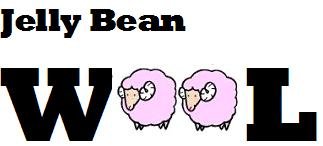
Principal Register – Disclaimer of "WOOL"![]()

Principal Register – Disclaimer of "INC." and "ANIMAL FOOD"![]()
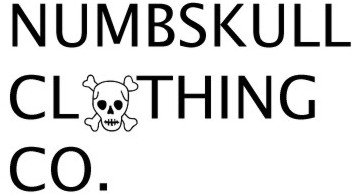
Principal Register – Disclaimer of "CLOTHING CO."![]()

Principal Register – Disclaimer of "PARIS"![]()
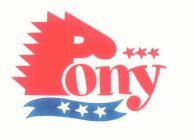
Principal Register – Disclaimer of "PONY"![]()
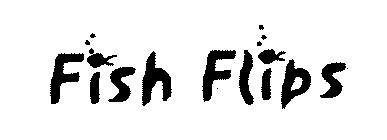
Principal Register – Disclaimer of "FISH"![]()
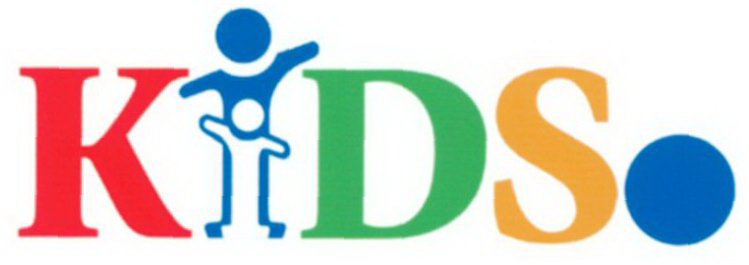
Principal Register – Disclaimer of "KIDS" ![]()
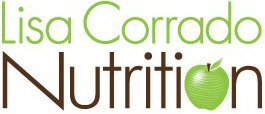
Principal Register – Disclaimer of "NUTRITION"![]()
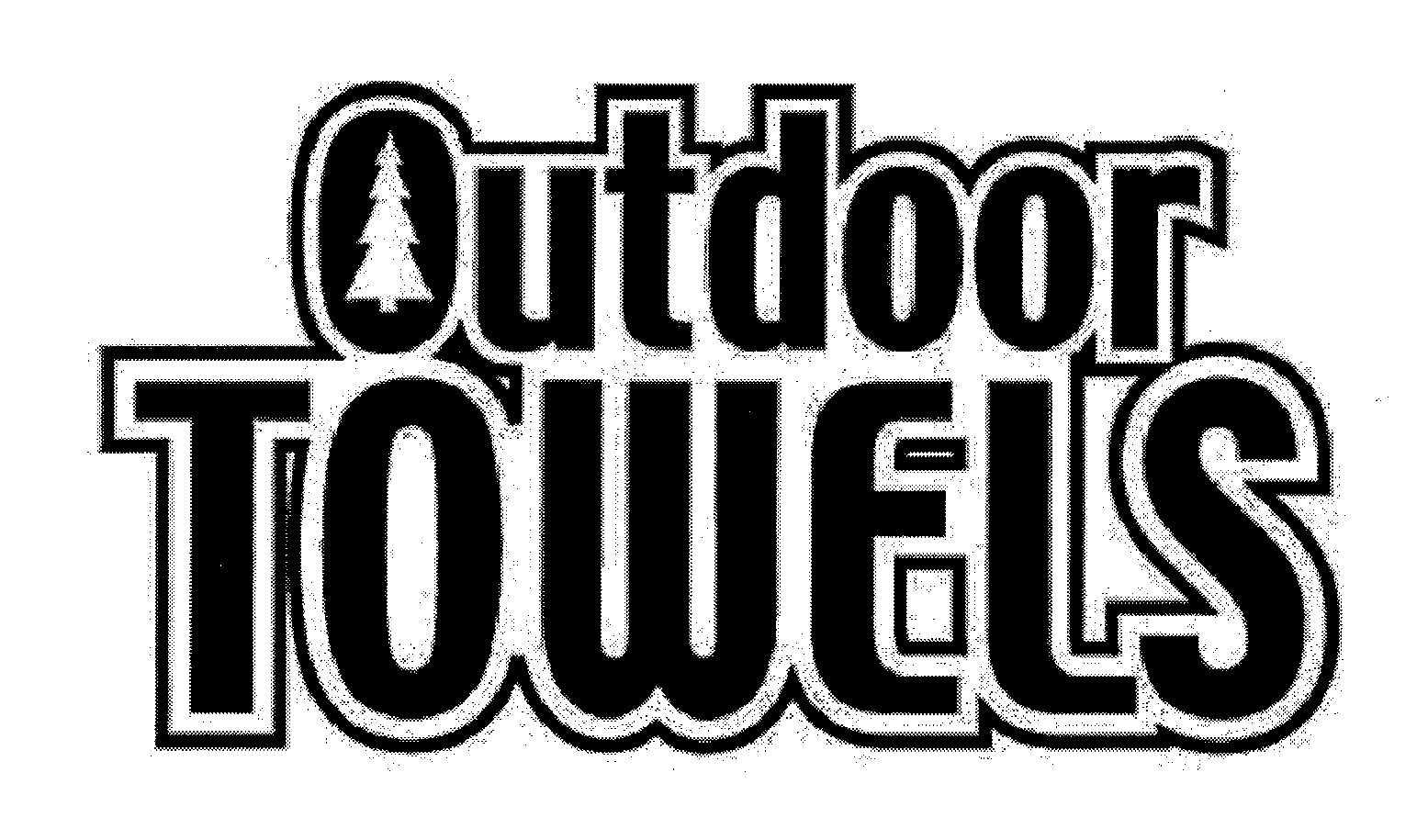
Principal Register – Disclaimer of "TOWELS"![]()
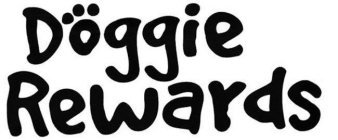
1213.05(g)(ii) Marks with Merely Descriptive or Primarily Geographically Descriptive Designs Replacing Letters within Descriptive or Primarily Geographically Descriptive Wording
If the design that replaces a letter within descriptive or primarily geographically descriptive wording is itself merely descriptive or primarily geographically descriptive, or is otherwise nondistinctive, the examining attorney must require the applicant to amend to the Supplemental Register or seek registration on the Principal Register under §2(f) and to disclaim any generic wording. For example:![]()

Disclaim "BANKERS ASSOCIATION" on Principal Register under §2(f) or on Supplemental Register![]()

Disclaim "BUILDERS ASSOCIATION" on Principal Register under §2(f) or on Supplemental Register![]()
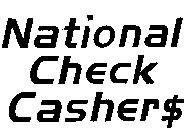
Disclaim "CHECK CASHERS" on Principal Register under §2(f) or on Supplemental Register![]()
1213.05(g)(iii) Marks with Accurate Pictorial Representations Replacing Letters in Merely Descriptive and Primarily Geographically Descriptive Marks
If the mark is otherwise merely descriptive or primarily geographically descriptive, and the design replacing a letter is an accurate pictorial representation of generic, merely descriptive, or geographically descriptive matter, the examining attorney must require the applicant to amend to the Supplemental Register or seek registration on the Principal Register under Trademark Act §2(f). The applicant must disclaim any generic wording or any accurate pictorial representation of generic matter. For example: ![]()

Disclaim "SOCCER BALLS" and the pictorial representation of the soccer ball on the Principal Register under §2(f) or on the Supplemental Register![]()
1213.05(g)(iv) Unitary Marks with Design Elements Replacing Letters in Descriptive or Generic Wording
If literal and design elements in a mark are so merged together that they cannot be divided or regarded as separable elements, these elements may be considered unitary. For example, where the design element replacing a letter is merely one part of a larger design, the mark may be unitary, and no disclaimer of the descriptive or generic wording is required:![]()
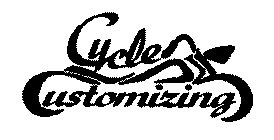

1213.05(h) Unitary Marks: Case References
In the following cases, marks were considered unitary: B. Kuppenheimer & Co., v. Kayser-Roth Corp., 326 F.2d 820, 822, 140 USPQ 262, 263 (C.C.P.A. 1964) (holding that KUPPENHEIMER and SUP-PANTS were combined so that they shared the double "P," making "an indivisible symbol rather than two divisible words"); In re Lego Juris A/S, 2022 USPQ2d 443, *7-9 (TTAB 2022) (holding MONKIE KID and monkey head design with stylized non-Latin characters unitary); In re Kraft, Inc., 218 USPQ 571, 573 (TTAB 1983) (finding that purchasers would regard LIGHT N’LIVELY as a unitary mark); In re Hampshire-Designers, Inc., 199 USPQ 383, 384 (TTAB 1978) (holding DESIGNERS PLUS+ for sweaters unitary); In re J.R. Carlson Labs., Inc., 183 USPQ 509, 511 (TTAB 1974) (holding E GEM unitary for bath oil containing vitamin E ). ![]()
In the following cases, marks were found not to be unitary: In re Slokevage, 441 F.3d 957, 963 78 USPQ2d 1395, 1400 (Fed. Cir. 2006) (holding not unitary trade dress mark for clothing consisting of a label with the words "FLASH DARE!" in a V-shaped background and cut-out areas located on each side of the label); Dena Corp., 950 F.2d at 1561, 21 USPQ2d at 1052 (holding EUROPEAN FORMULA above a circular design on a dark square or background not unitary); In re Ginc UK Ltd., 90 USPQ2d 1472, 1476 (TTAB 2007) (holding ZOGGS TOGGS for clothing not unitary and affirming requirement for disclaimer of "TOGGS"); In re Brown-Forman Corp., 81 USPQ2d 1284, 1288 (TTAB 2006) (holding GALA ROUGE for wine not unitary and affirming requirement for disclaimer of "ROUGE"); In re Lean Line, Inc., 229 USPQ 781 (TTAB 1986) (holding LEAN LINE for low calorie foods not unitary; requirement for disclaimer of "LEAN" held proper); In re IBP, Inc., 228 USPQ 303 (TTAB 1985) (holding IBP SELECT TRIM for pork not unitary; refusal of registration in the absence of a disclaimer of "SELECT TRIM" affirmed); In re Uniroyal, Inc., 215 USPQ 716 (TTAB 1982) (holding UNIROYAL STEEL/GLAS for vehicle tires not unitary; requirement for disclaimer of "STEEL/GLAS" deemed appropriate); In re EBS Data Processing, 212 USPQ at 966 (TTAB 1981) (holding PHACTS POCKET PROFILE, for personal medication history summary and record forms, not unitary; refusal to register in the absence of a disclaimer of "POCKET PROFILE" affirmed. "A disclaimer of a descriptive portion of a composite mark is unnecessary only where the form or degree of integration of that element in the composite makes it obvious that no claim other than of the composite would be involved. That is, if the elements are so merged together that they cannot be regarded as separable elements, the mark is a single unitary mark and not a composite mark and no disclaimer is necessary."); In re Nat’l Presto Indus., Inc., 197 USPQ 188 (TTAB 1977) (holding PRESTO BURGER for electrical cooking utensils not unitary; requirement for disclaimer of "BURGER" affirmed).![]()